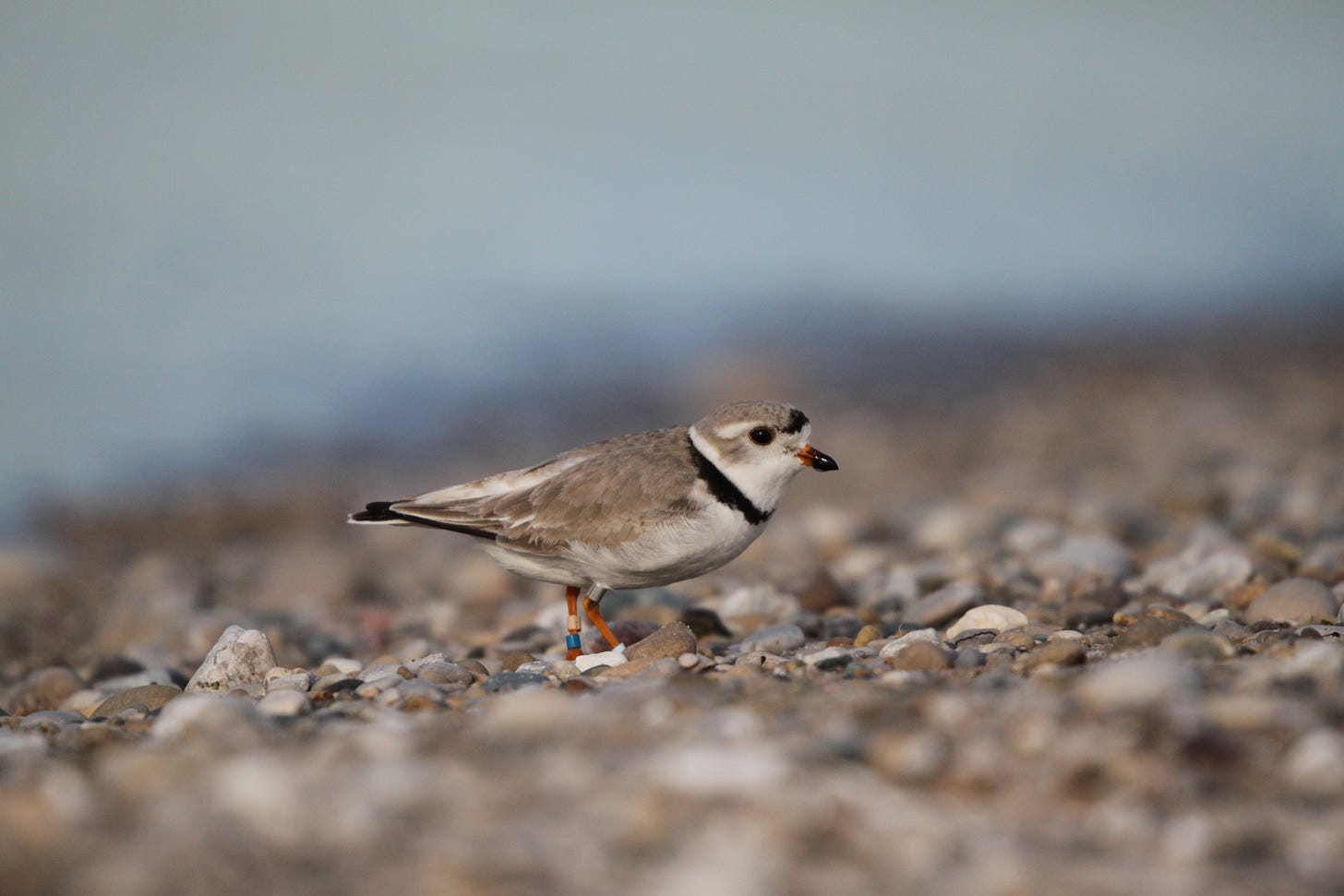In pursuit of a birding nemesis
Limpkins continue sudden range expansion into the Midwest.
The nemesis bird. These are the species that have managed to avoid us through all manner of searching, sleuthing, surveying, and detecting. They’re out there, and being seen by others, just not by YOU. It’s an awful feeling as the reports come in, all the sightings, the cheerful social media posts, the comments and photos, and yet you’ve come up empty again.
For me, this was the Limpkin, an elegant wading bird of freshwater and brackish marshes. I didn’t see one on childhood trips to the Everglades. Then I spent years visiting the Bahamas and struck out, too. There is a feature in eBird where one can search for “their most needed life bird” for any given location. The snail-loving Limpkin quickly rose to be the most common species seen by other eBirders that hadn’t been seen by me. Then came the first-ever sightings of Limpkin in Illinois, first in southern Illinois in 2019 and then at Chain O’Lakes State Park in 2021. I sat at home and stewed while others happily posted photos of their Limpkins. It seemed everyone was seeing Limpkins.
That was the feeling as I headed south to the Bahamas in the spring of 2022, Limpkin still atop my list of target species. Everything changed on a routine trip to a local grocery store, on a typically warm and beautiful spring day. That’s when we observed two Limpkins—not near water, but in a yard—under a big tree feasting on terrestrial snails. The resultant feeling of elation may be hard to describe to the non-birder. It’s part surprise, part relief, and part excitement at seeing a beautiful bird up close.
A lot has happened in Limpkin news since then. Illinois has been dotted with Limpkin sightings this year, even here in Cook County at Skokie Lagoons and Chicago Botanic Garden. Just look at the Limpkin’s range map in my 1980s edition of Peterson’s guide to Eastern Birds—they’re entirely confined to the Gulf Coast and Florida. It’s been hard to fathom that this bird could be seen outside the southeastern United States.
Most are quick to cite climate change as the reason why Limpkins, named for their halting movements and “limping” walk, have suddenly appeared in the Midwest. That may very well be the case. But after so many years without seeing these beauties, I’m content to enjoy them as a surprise addition to our local avifauna.
By the way, I was just looking at some eBird data, and I’m ranked fifth for sightings in one little corner of the Bahamas!
Piping Plover summer
I haven’t had a chance to report it in this space, but it has been a banner year for Great Lakes Piping Plovers. The 2023 breeding season had a record pair count of 80 pairs; this is a species whose population once dwindled to just a dozen pairs decades ago. New nesting sites included Long Tail Point near Green Bay, Wisconsin, Tawas Point in Michigan (no pairs since 2015), and Temperance Island in Michigan (no pairs since 2005).
While our Chicago plovers have now departed, the Daily Herald has a nice summary of the plover activity this summer in Lake County, Illinois.
On Sunday at 1 p.m., I’ll be showing “Monty and Rose 2: The World of Monty and Rose” at Crabtree Nature Center in Barrington. Come on out, and we’ll recap the plover success of 2023.
Bird conservation fundraiser set for Saturday
Chicago Ornithological Society (COS) has a bird conservation fundraiser set for Saturday at 5 p.m. at the lovely space of Metropolitan Brewing, 3057 N. Rockwell in Chicago. Enjoy live music, delicious craft beers, the grand reveal of COS’ new logo, and of course, birding from the outdoor deck along the Chicago River. The event raises funds for COS’ many conservation projects, which include purchasing native shrubs for restoration projects to mist nets for its banding station. Another COS effort, the Chicago Nighthawk Project, just completed its second season of monitoring breeding nighthawks in Chicagoland. Unfortunately, nighthawks are one of the fastest-declining species in North America. COS volunteers are studying the nightjars’ presence in Chicago to add to the data set about this special bird.
Watch an excerpt from FLUDDLES
In case you missed it, last week we released an excerpt of the new documentary, FLUDDLES, about the agricultural wetlands of the Midwest and the birds that rely on them. The film takes viewers on a journey to these oft-fleeting watery areas and highlights the efforts to restore them to the landscape. There is a movement afoot right now that aims to convert farmland back to the wetlands and prairie that once covered much of the Midwest. In this new clip, we visit with an active wetland reconstruction effort, learn ways that farming can co-exist with wildlife, and discover how one family experienced these changes firsthand.
If you liked today’s post, you also might like this past post:
Identifying a Cackling Goose is far from a trivial pursuit
Birding offers many things, but the joy of discovery is one of its foremost delights. That’s what brought me to Calumet Park in southeast Chicago in November 2018 to look for a Cackling Goose, a relatively new species that was once lumped with the Canada Goose. I needed a cackler for my 2018 year list and it seemed a lock since a few birds had been repo…








